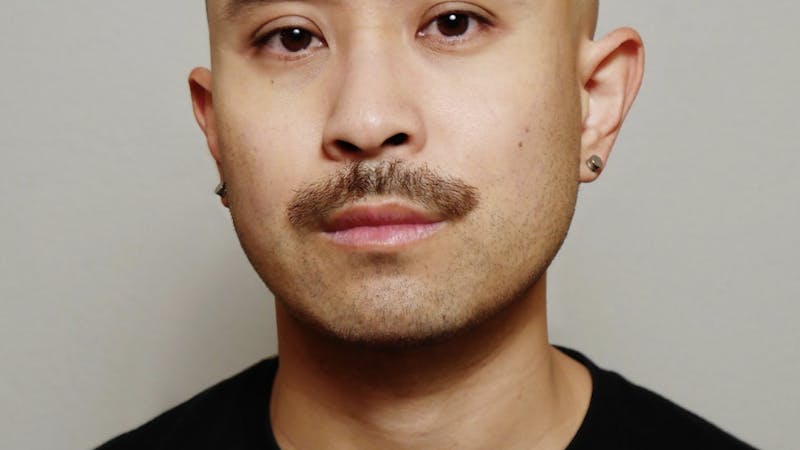Wiess Tabletop’s Into the Woods impresses with smooth production [B]
Most students are familiar with the classic childhood tales of Little Red Riding Hood, Jack and the Beanstalk, Rapunzel and Cinderella. This year, Wiess Tabletop Theater’s rendition of Stephen Sondheim’s musical, Into The Woods, weaves together the stories of the four fairy tales with a new set of individuals: a kind baker and his domineering wife who have been placed under a curse that prevents them from having a child together.
Most students are familiar with the classic childhood tales of Little Red Riding Hood, Jack and the Beanstalk, Rapunzel and Cinderella. This year, Wiess Tabletop Theater’s rendition of Stephen Sondheim’s musical, Into The Woods, weaves together the stories of the four fairy tales with a new set of individuals: a kind baker and his domineering wife who have been placed under a curse that prevents them from having a child together. Directed by Wiess College junior Max Payton and produced by Wiess College sophomores Sean Doyle and Vicky Comensañas, the musical sets up the premise of each character needing to go “into the woods” for a specific purpose, and then displays the intertwining of the stories of each character. While some of the singing was a bit off-key and parts of the acting overdramatic, Wiess Tabletop’s Into the Woods kept the audience interested, laughing and, in some scenes, on the edge of their seats.
The actors utilized the stage impressively. At many points during the show, two or three groups of characters were on the stage at once, with the spotlight focused only on one group. While the others stood calmly waiting for their turn to sing, dance or speak, the fact that they were all on stage at the same time made for quick transitions and less awkward in-between time of people entering and exiting the stage. The scenery was also well done. The set components and the handmade stage accessories were painted intricilly. In addition, the live orchestra was a magnificent complement to the musical. They played magnificently and also incorporated fun sound effects complementing events that were occurring on stage.
The acting and singing highlights of the show were McMurtry College sophomore Helen Hoover, who played Cinderella, and Duncan College senior David Dalton, who played the baker. Cinderella’s beautiful voice carried throughout the Wiess Commons, and her passionate and honest portrayal of a poor girl looking for her prince was powerful and convincing. Throughout the play, the baker experiences a plethora of emotional highs and lows, including finding and losing certain key items needed to reverse the curse, fighting and falling back in love with his wife and frustration over not being able to conceive a child. Regardless of the emotion, Dalton expressed it perfectly. He accompanied his fantastic singing and acting performance with perfect facial expressions, and his energy truly helped to carry the entire show. Brown College sophomore Gabriel Wang provided excellent comic relief throughout the musical. His somewhat clueless and innocent portrayal of Jack (from Jack and the Beanstalk) was executed perfectly, and cracked the audience up each time he did something on stage. Finally, Duncan College senior Megan Troxell gave an excellent performance as Little Red Riding Hood, playing a hopelessly innocent and naïve girl who was just looking to give bread and sweets to her grandmother.
Unfortunately, while each character’s performance demonstrated admirable effort, not all of them were able to deliver convincing and awe-inspiring performances. For instance, while Lovett College sophomore Emily Higgs’, heart was clearly very much into her performance as the baker’s wife, and her singing voice was quite respectable, at times she overracted. While there are some dramatic scenes in the musical, her blatant over dramatization made it somewhat difficult to take her character seriously. Also, while she clearly became more comfortable and confident on stage throughout the play, Duncan College senior Amber Mirajkar, who was playing the witch, started her first few solo songs in somewhat of a chant, as opposed to an actual song. Thankfully, as the show went on, her overly bold and domineering acting and singing became much better, making the show more enjoyable to watch.
The producers and directors of Into the Woods did an excellent job not only in selecting the supporting cast, but also in using them as multiple smaller roles throughout. For example, Baker sophomore Sylvia Omozee shone as not only a conniving wolf, but also a bratty stepsister of Cinderella. Another great supporting character with both excellent acting and singing skills was Wiess College junior Kyle Adams, who played a concerned and charming prince, searching far and wide to find Cinderella, whom he had lost track of at the royal
festival.
All in all, Wiess Tabletop’s Into the Woods was well done, seeing as there are many intricate and interconnected parts to this detailed story. While there were some downfalls in a few characters, standouts, as well as the smooth production as a whole, make the play worth going to see. Shows are in the Wiess Commons, and begin at 8pm on April 17th, 18th, and 19th. Ticket prices are $5 for students and associates, $7 for faculty, and $8 for other
visitors.
More from The Rice Thresher

Andrew Thomas Huang puts visuals and identity to song
Houston is welcoming the Grammy-nominated figure behind the music videos of Björk and FKA twigs on June 27.

Live it up this summer with these Houston shows
Staying in Houston this summer and wondering how to make the most of your time? Fortunately, you're in luck, there's no shortage of amazing shows and performances happening around the city. From live music to ballet and everything in between, here are some events coming up this month and next!

Review: 'Adults' couldn’t have matured better
Sitcoms are back, and they’re actually funny. FX’s “Adults” is an original comedy following a friend group navigating New York and what it means to be an “actual adult.” From ever-mounting medical bills to chaotic dinner parties, the group attempts to tackle this new stage of life together, only to be met with varying levels of success.

Please note All comments are eligible for publication by The Rice Thresher.